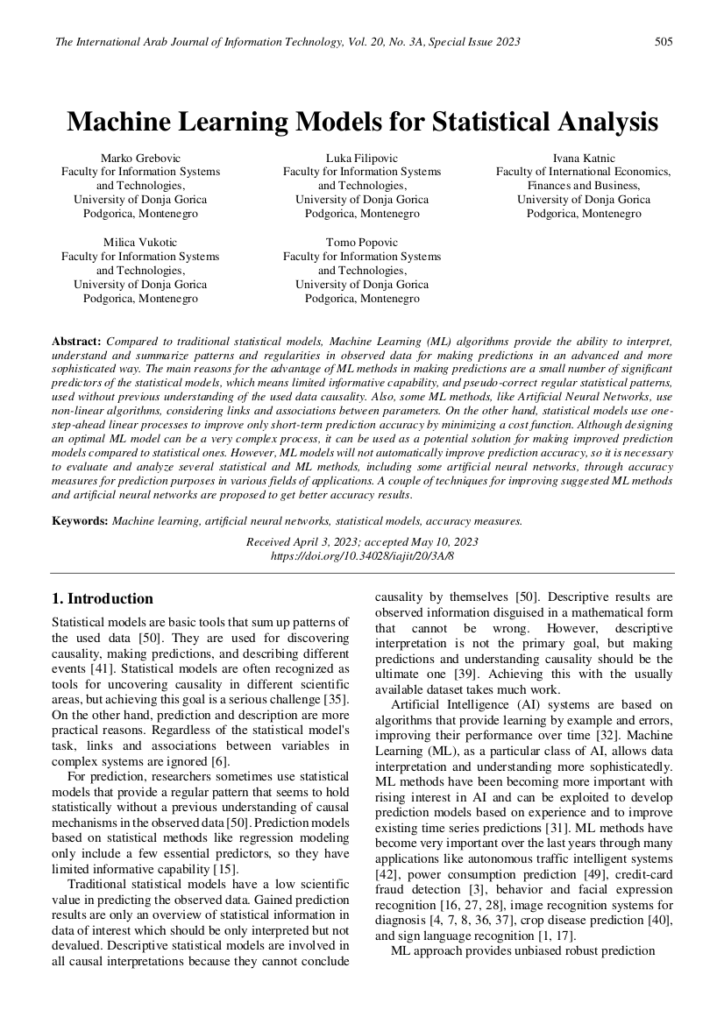Researchers from UDG and NCC Montenegro published a paper “Machine Learning Models for Statistical Analysis” by M. Grebovic et al. in The International Arab Journal of Information Technology, Vol. 20, No. 3A, Special Issue 2023. This was a follow up effort on the paper previously presented at the ACIT2023 conference.
ABSTRACT – Compared to traditional statistical models, Machine Learning (ML) algorithms provide the ability to interpret, understand and summarize patterns and regularities in observed data for making predictions in an advanced and more sophisticated way. The main reasons for the advantage of ML methods in making predictions are a small number of significant predictors of the statistical models, which means limited informative capability, and pseudo-correct regular statistical patterns, used without previous understanding of the used data causality. Also, some ML methods, like Artificial Neural Networks, use non-linear algorithms, considering links and associations between parameters. On the other hand, statistical models use one-step-ahead linear processes to improve only short-term prediction accuracy by minimizing a cost function. Although designing an optimal ML model can be a very complex process, it can be used as a potential solution for making improved prediction models compared to statistical ones. However, ML models will not automatically improve prediction accuracy, so it is necessary to evaluate and analyze several statistical and ML methods, including some artificial neural networks, through accuracy measures for prediction purposes in various fields of applications. A couple of techniques for improving suggested ML methods and artificial neural networks are proposed to get better accuracy results.
The paper is available at the following link.


